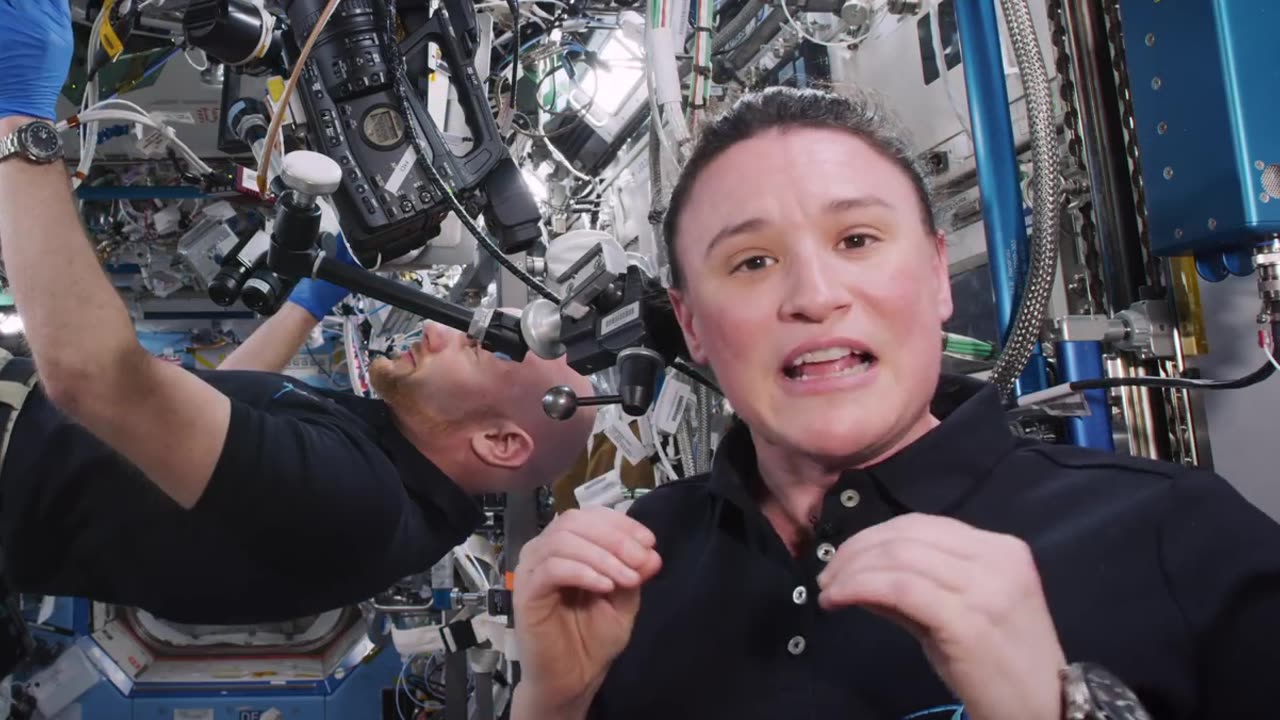Premium Only Content

Space-Grown Crystals Offer Clarity on Parkinson's Disease-4K-NASA OFFICAL
Parkinson's disease is a chronic neurodegenerative disease that affects more than 5 million people worldwide. It is characterized by the progressive loss of motor control, resulting in symptoms such as tremors, rigidity, and difficulty with balance and coordination. While there is currently no cure for Parkinson's disease, ongoing research seeks to better understand its underlying causes and find ways to treat and prevent it.
One avenue of research that holds promise in shedding light on Parkinson's disease is being conducted on the International Space Station (ISS). In a video narrated by NASA astronaut Serena Auñon-Chancellor and featuring European Space Agency (ESA) astronaut Alexander Gerst, we see the examination and photography of LRRK2 crystals.
LRRK2, or Leucine-Rich Repeat Kinase 2, is a protein associated with Parkinson's disease. Mutations in the LRRK2 gene are known to increase the risk of developing the disease. By growing LRRK2 crystals in the unique microgravity environment of the ISS, scientists hope to gain insights into the protein's structure and behavior that may not be possible to obtain on Earth.
Studying LRRK2 crystals in space could help researchers:
Observe Crystal Growth: Microgravity can allow for the growth of larger and more well-ordered crystals, making it easier to analyze their structure.
Understand Protein Function: By understanding the 3D structure of LRRK2, scientists can gain insights into how it functions in the body and how mutations may lead to Parkinson's disease.
Drug Development: This research may contribute to the development of drugs or therapies that target LRRK2, potentially offering new treatment options for Parkinson's disease.
The International Space Station provides a unique platform for conducting experiments that are not possible on Earth due to the absence of gravity-related disturbances. It allows scientists to study the fundamental processes of biology, chemistry, and physics in a novel environment, which can lead to breakthroughs in various fields, including medical research.
-
 5:01
5:01
BIG NEM
9 hours agoInside the Albanian Mob... As a Serb.
6.15K1 -
 1:40:14
1:40:14
TheConnieBryanShow
4 days agoGAIN OF FUNCTION: MRNA, D.A.R.P.A. & THE PFIZER PAPERS
5.89K4 -
 2:14:01
2:14:01
Fresh and Fit
6 hours agoDr. Disrespect Moves To Rumble!
54.9K27 -
 6:14:53
6:14:53
Akademiks
8 hours agoDrake Sued his Label for Botting Kendrick Lamar Streams to 'End Him'. Kendrick Drops new video!
54.2K11 -
 0:46
0:46
Dr Disrespect
14 hours agoIt's not just a stream... it's an experience
324K1.7K -
 5:45:38
5:45:38
80sKiid
9 hours ago $28.47 earnedFirst stream on RUMBLE!!!!!
95.2K5 -
 3:56:31
3:56:31
JakeParker
9 hours ago $14.17 earnedJakeParker is LIVE on Rumble
54K -
 8:09:23
8:09:23
SpartakusLIVE
10 hours ago $26.20 earnedThe Duke rallies squad for LAUGHS into the night with a SMATTERING of TOXIC banter
87.5K17 -
 1:03:51
1:03:51
Flyover Conservatives
1 day agoGeneration Z’s Revolution: 17 Year Old Author on the Return of Faith, Family, and the End of Feminism - Hannah Faulkner; Economic Update - Dr. Kirk Elliott | FOC Show
49.1K2 -
 1:12:43
1:12:43
Adam Does Movies
12 hours ago $20.91 earnedMoviegoers Are Singing Now! + Lilo & Stitch + Sonic 3 - LIVE!
83.8K7